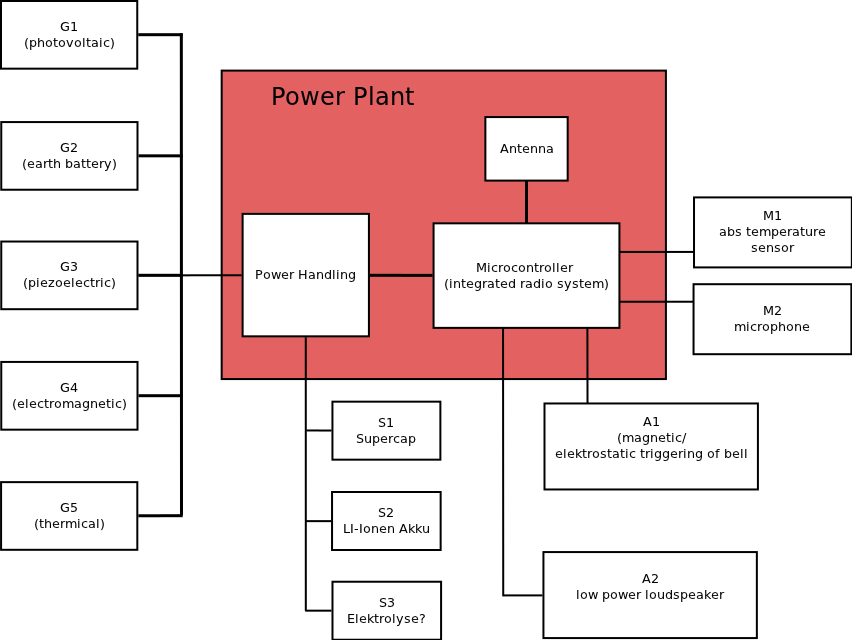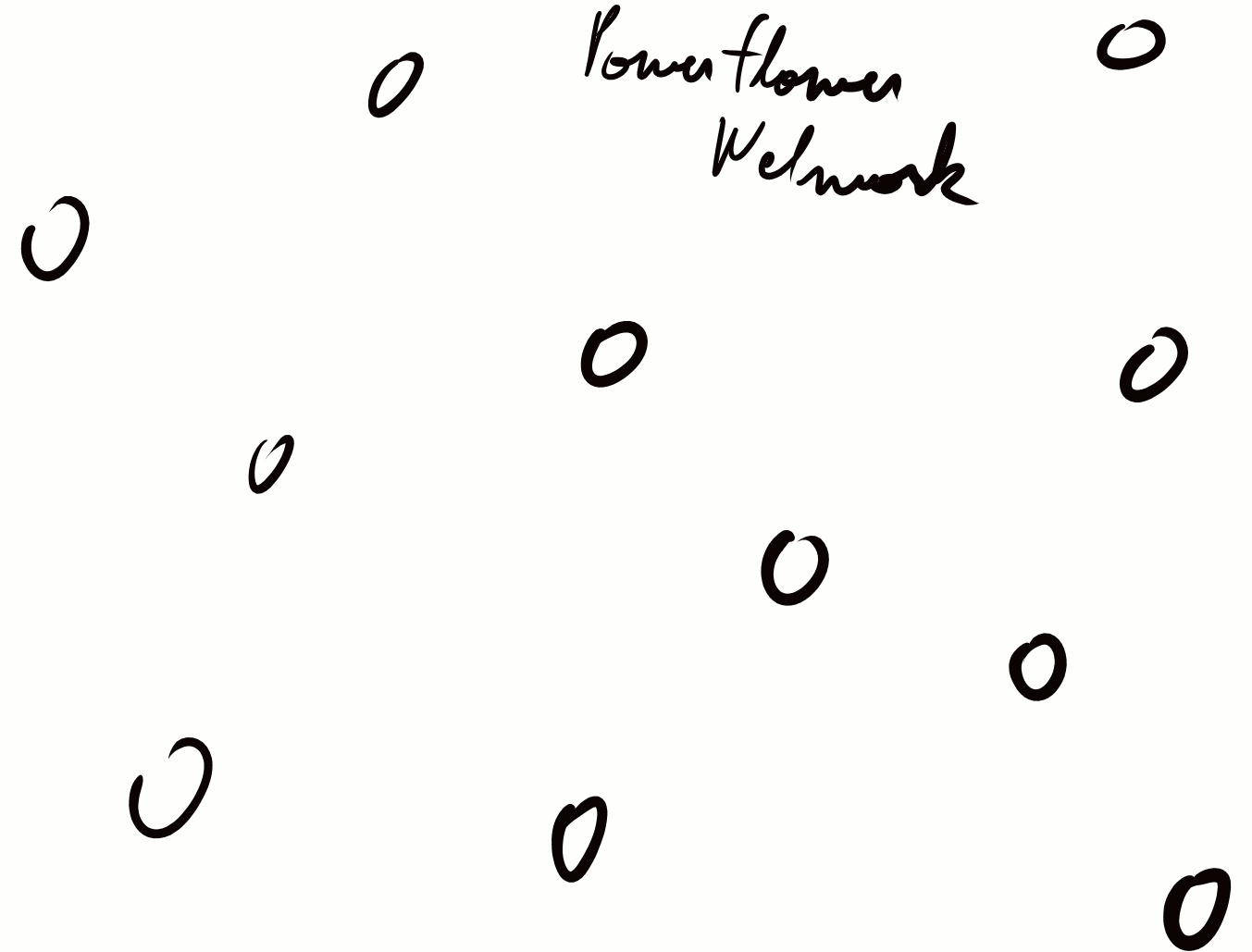Overview
PowerFlowerBells Network
Concept of an cybernetic sound installation with bell player
"Power Flower Network" is an artwork in the series of "social machines" and "robotic art" for autonomous systems done by Winfried Ritsch at Atelier Algorythmics .
- see also:
Introduction
As destination art a ensemble of robotic flowers with bells are placed in an landscape. A powerflowerbell (PFB), as a kind of cybernetic organism, is an autonomous robot, which obtain energy from the environment, like earth and sun, and drives a small bell. It behaves quite like a natural flower, needs humidity, light and space. Many of powerflowerbells are planted in an preferable natural environment like a flower meadow, or on an slope. Also an artificial environment would also be convenient, if prepared accordingly. The robotic flowers work as small power plants, and harvest energy from the soil and optional additional from the sun or the wind. They are capable to communicate with each other over short distance data-radio to form a network of little cybernetic musicians as bell players. They act altogether like a swarm in order to fulfill the goal of playing compositions in relation to the environmental status of their sensor data like power supply, temperature, time and information on neighbors and their individual position and identity.
Playing spontaneously from time to time, the powerflowerbells catch the attention of visitors and gardeners, listening to them while taking care of their artificial life. They represent an independent life-form, which nourishes from the natural energy of the environment, such as the ground as an earth battery, kinetic energy, temperature differences, wind and sun energy supply depending on the kind of its implementation.
The powerflower resembles a bloom with small bells as instruments, since the bells are driven by robotic micro-muscles, making them sound individually in pitch and tone for each flower, and being played in a determined rhythm. Therefore a kind of choir music by bells can be achieved on an algorithm basis over the network.
As communication interface ultra low power data-radio is used. Each powerflower knows and can sensor its neighbors, acting like a node in a graph forming a mesh network. These nodes relay messages, so all of the powerflowerbells can detect each other with a certain power index, forming the map of their recognized world in their range and gateways can connect meadows over long distance.
The powerflowers should a least be robust enough to survive all seasons and play when they are treated well. A gardener has to look after them once in a while, if they need little moisture in the earth and are not supplanted by other organisms like weeds consuming sun light. They also have to be supplied with moisture or water for the earth battery to work and they should not get demolished by other life-forms. They can live on an earthy meadow like roses, and can be distributed from some centimeters or several meters. A field of 20 x 20m or bigger serves as a sufficient environment, where paths between the powerflowerbells should enable to enjoy a convincing surround experience.
A base station can be optional installed, to contact the powerflowerbells and observe and maintain them either on a screen on site or as an gateway via Internet connection with a mobile computer or other power flower meadows.
Concerts can be organized and scheduled, where the powerflowerbells accumulate energy in advance to finally perform a concert for a certain span of time.
Implementation
The implementation is realized with the help of a study accomplished at the university of technology on "energy harvesting for autonomous sound installation" where a energy harvesting kit is developed within this project and should implement a first instantiation of the work. As a primary goal at least 300 of the powerflowerbells should be installed with an planed density of 1 per square-meter.



PowerFlowerBell sketch with roots
Bell
The bells could be crafted in metal, ceramic or wood and are played by a low power playing mechanism. This mechanism should be robust and easy to trigger. As a consequence, micro-muscles for robots, deriving from nano-technology, should be used with a proper mechanism or high efficient micro motors or solenoids.
Installation
It is primarily intended to create an distributed outdoor garden sculpture or also inside in large rooms with artificial lights and soil. Robots behaving like flowers, need some ground.

Example sketch of Power Flowers in a meadow
Electronics
A central part is a printed circuit with ultra low power micro-controllers, energy harvester and low power receiver transmitter. A diploma thesis at the Technical University of Graz has been done for exploring this and to assemble a toolkit for building the items. Elements of the toolkit are shown in the figure below.

elements of a powerflower plant kit
Network
One central aspect is the dynamic network, which is formed over ultra-lowpower radio, where PowerFlowerBells connect dynamically which each other and forms a network, where they can play spatialized compositions.

Dynamic PowerFlowerBells Network setting itself up (example)
STATUS
- Waiting for a project for development of Version~1.0 for a first series of mass production (1000 pieces) for installation.
- Paper of Earth battery powered power flower at SMAC 2013 in Stockholm. Poster SMAC
- A first prototype was realized and proven to work within a diploma thesis from Josef Schauer at "Institut f. Elektrische Anlagen TU Graz": Download Diploma 2013 (PDF)
| Authors: | Winfried Ritsch |
|---|---|
| Date: | 13.11.2011-2014 |
| Contact: | |
| Version: | 0.3.2 |
| Copyright: |
|

